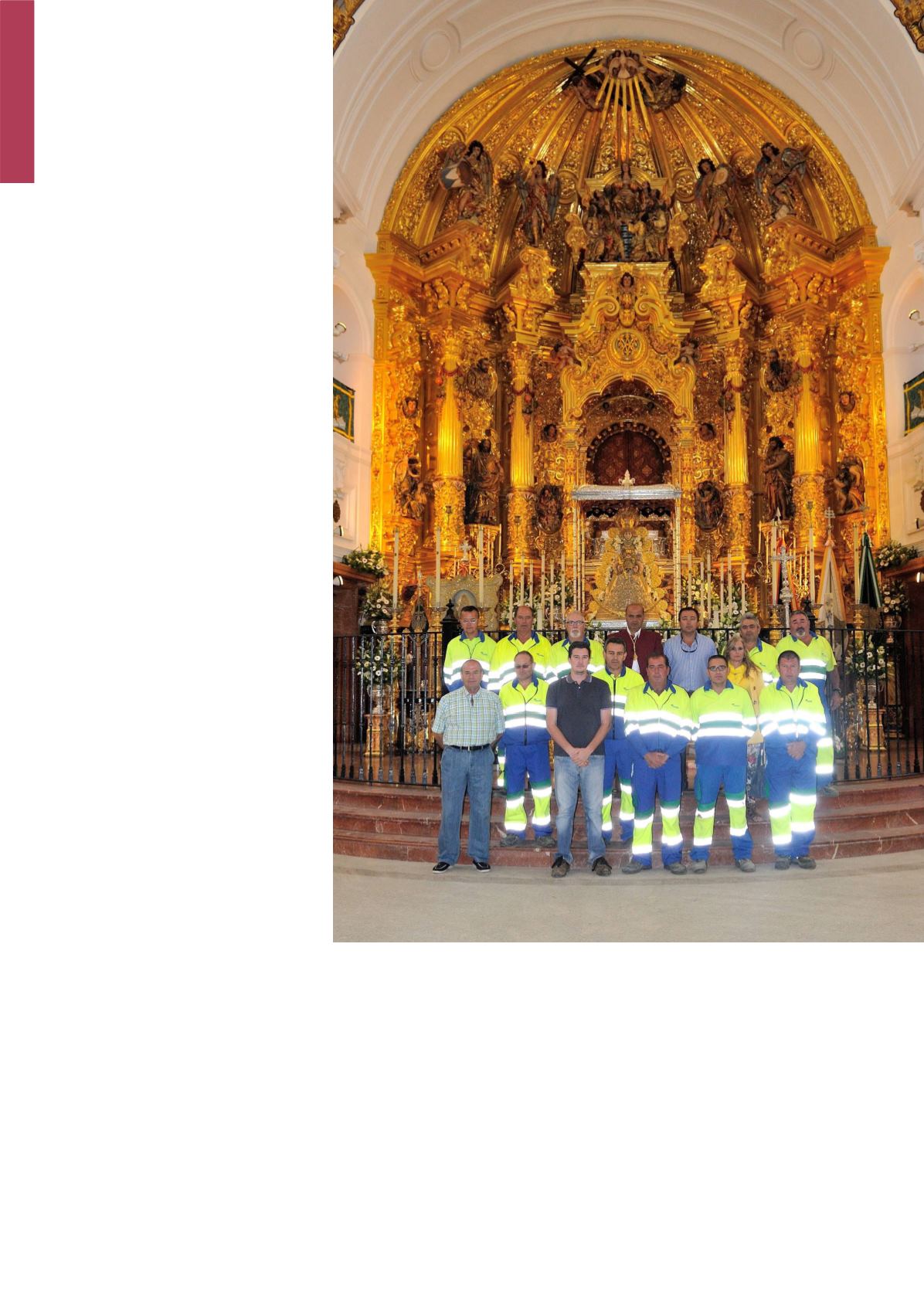

water during the days of the pilgrimage to
800,000 visitors. This amount of water, dis-
tributed in tanks, includes 5 million litres of
water for the animals and for irrigating some
parts of the village. To meet this challenge,
FCC Aqualia starts working before the pil-
grims arrive, carefully organizing and adap-
ting the facilities. In order to ensure that the
water supply is effective, more pumps are
turned on at the deposits and the tan trunk
starts to function distributing water to the
areas in the outskirts of the village where
people gather.
Exhaustive analytical control
The company also works to ensure that the
quality of the water is optimal. FCC Aqualia
performs an exhaustive analytical control,
testing the quality of the water at the Los
Ánsares tank outlet as well as the water
distributed by the tank trucks which comes
from the El Rincón Well and three different
points in the village’s water supply network,
normally public water fountains. These
tests, more than 50 of them, are perfor-
med at the company’s laboratories which
are certified for this purpose, and checked
by the department of health which certifies
that the water is potable and apt for con-
sumption.
The company also checks and cleans the
water collectors, the pumped wastewater
which is diverted to a provisional storage
pool with a capacity of nearly 40 million li-
tres, the approximate volume of wastewa-
ter generated during the pilgrimage.
The sewerage network is checked and the
entire network of the village is cleaned befo-
re the arrival of the pilgrimage brotherhoods
to prevent clogging, paying special atten-
tion to the most conflictive zones such as
Torre Carbonero, Camino Puente El Rey,
Sanlúcar and Sacrificio streets, as well as
the camping areas of the brotherhoods in
Santaolalla and Boca el Lobo streets.
The company also checks and fixes the
pumps which push the detritus to the
wastewater treatment which during the pil-
grimage accumulates it in a storage pool
with a capacity for 40 million litres since the
plant does not have sufficient capacity to
treat the huge amount of waste generated
during these days. After the pilgrimage is
over, the input flow is reduced and this was-
tewater is treated gradually to prevent any
discharges thereby protecting the natural
environment.
The human team is fundamental to achieve
all of this. During the days of the pilgrimage,
FCC Aqualia has a special work team of 26
employees who work twenty-two 24-hour
shifts each team made up of 11 workers.
Work continues when the pilgrimage is over
Work is not over when the pilgrimage to El
Rocío ends. More efforts are made during
the following days to ensure that everything
is in good working order. Wastewater is



















